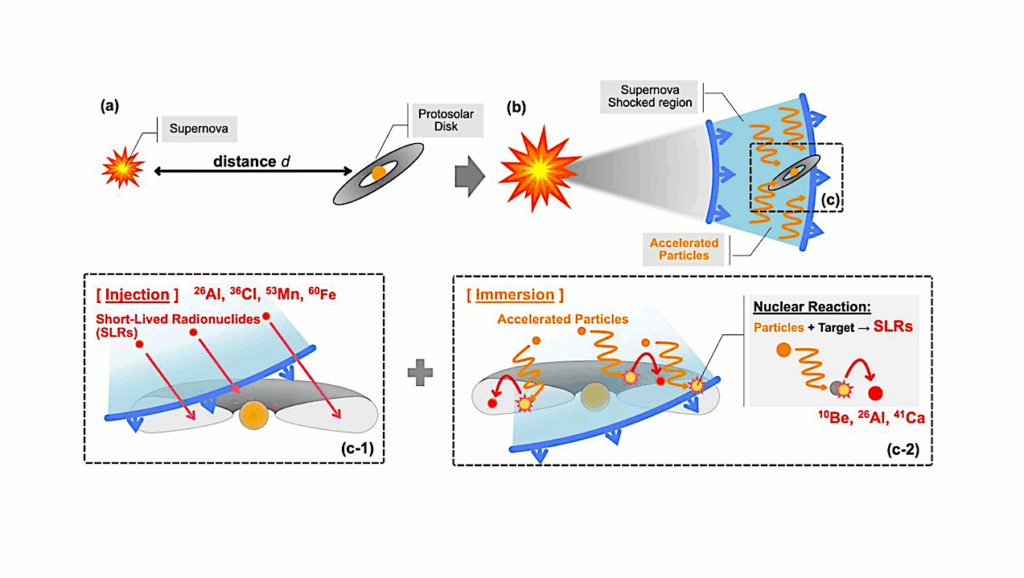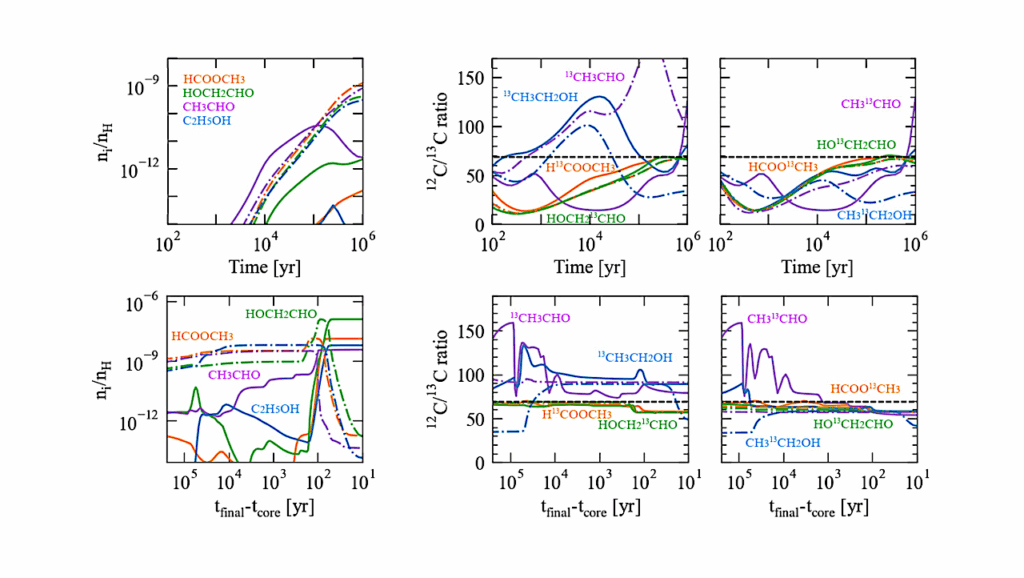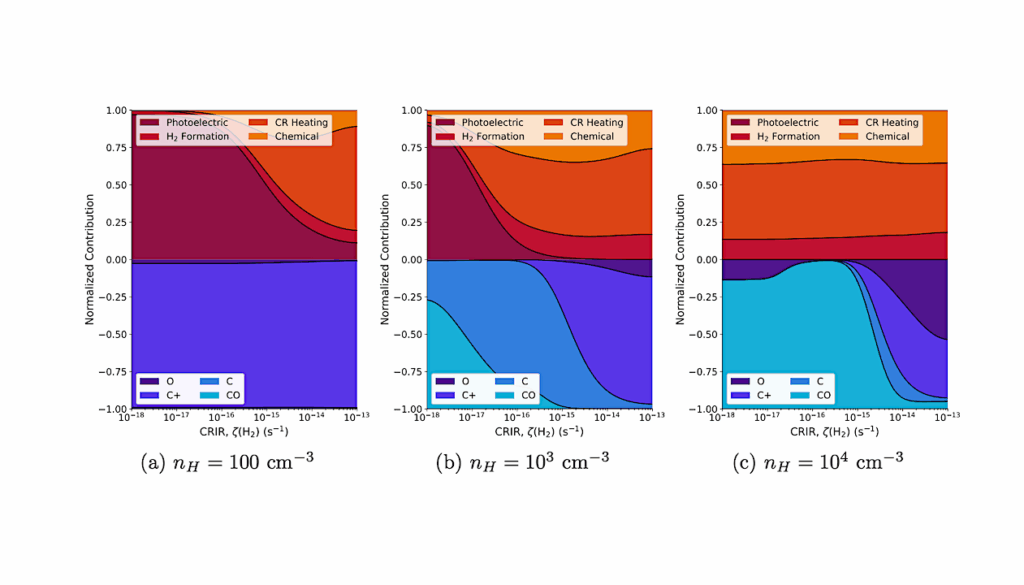Detection Of Possible Glycine Precursor Molecule Methylamine Towards The Hot Molecular Core G358.93−0.03 MM1

The search for the simplest amino acid, glycine (NH2CH2COOH), in the interstellar medium (ISM), has become a never-ending story for astrochemistry and astrophysics researchers because that molecule plays a possible connection between the Universe and the origin of life.
In the last forty years, all searches for NH2CH2COOH in the ISM at millimeter and submillimeter wavelengths have failed. Since the detection of NH2CH2COOH in the ISM was extremely difficult, we aimed to search for the possible precursors of NH2CH2COOH. Earlier, many laboratory experiments have suggested that methylamine (CH3NH2) plays an important role in the ISM as a possible precursor of NH2CH2COOH.
After spectral analysis using the local thermodynamic equilibrium (LTE) model, we identified the rotational emission lines of CH3NH2 towards the hot molecular core G358.93−0.03 MM1 using the Atacama Large Millimeter/Submillimeter Array (ALMA). The column density of CH3NH2 towards the G358.93−0.03 MM1 was estimated to be (1.10±0.31)×1017 cm−2 with an excitation temperature of 180.8±25.5 K. The fractional abundance of CH3NH2 with respect to H2 towards the G358.93−0.03 MM1 was (8.80±2.60)×10−8. The column density ratio of CH3NH2 and NH2CN towards G358.93−0.03 MM1 was (1.86±0.95)×102.
The estimated fractional abundance of CH3NH2 towards the G358.93−0.03 MM1 agrees fairly well with the previous three-phase warm-up chemical modelling abundance of CH3NH2. We also discussed the possible formation mechanism of CH3NH2, and we find that CH3NH2 is most probably formed via the reactions of radical CH3 and radical NH2 on the grain surface of G358.93−0.03 MM1.
Arijit Manna, Sabyasachi Pal
Comments: Published in New Astronomy
Subjects: Astrophysics of Galaxies (astro-ph.GA)
Cite as: arXiv:2402.16798 [astro-ph.GA] (or arXiv:2402.16798v1 [astro-ph.GA] for this version)
https://doi.org/10.48550/arXiv.2402.16798
Focus to learn more
Journal reference: New Astron, 109, 102199, (2024)
Related DOI:
https://doi.org/10.1016/j.newast.2024.102199
Focus to learn more
Submission history
From: Arijit Manna
[v1] Mon, 26 Feb 2024 18:11:03 UTC (1,806 KB)
https://arxiv.org/abs/2402.16798
Astrobiology, Astrochemistry,








